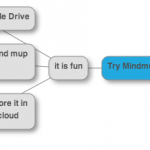3 Tools to Achieve Perfect Product/Market Fit
This is a guest post by Sophie Knowles. Sophie is the Co-founder of PFD Pro.
Marc Andreessen, one of Silicon Valley’s best-known venture capitalists, famously proclaimed, “the only thing that matters for a startup is to achieve product/market fit.” According to Andreessen, product/market fit means being in a good market with a product that can actually satisfy that market.
While meeting the market’s needs in a new industry is never easy, there are many online tools that can dramatically improve your understanding of what potential customers are looking for (who collectively make up the market). At PDF Pro, a web-based PDF editor startup, we found three tools to be particularly instrumental in our journey towards achieving product/market fit in our industry.
CanIRank:Drive leads via organic search traffic
The first step to meeting customer needs is to make potential customers aware of your product or service! Depending on your industry, this may involve using strategies such as press releases, paid advertising, referrals from existing customers, app store optimization or good old SEO. As a web-based service, optimizing our SEO efforts is a critical component to achieving success.
CanIRank is a competitive analysis online software tool that demystifies SEO using big data. After analyzing PDF Pro’s domain, the tool made a series of data-driven recommendations for us to implement. Recommendations included writing content geared towards specific keywords, changes to the home page, as well as link building outreach opportunities with specific publishers.
After implementing the recommended changes, we’ve experienced a significant growth in targeted organic search traffic. While there’s a long journey ahead of us, CanIRank has helped us bring structure to our SEO efforts.
Mixpanel: Understand how customers interact with your product
After driving some initial leads to your product or service, the next step is to better understand user behavior. While we initially tried to understand user behavior by using online usability testing services, we found that nothing beats real leads looking to solve a problem. While usability testing was useful for finding opportunities to improve the customer experience, however we found testers didn’t really adopt the mindset of a potential customer. In particular, it was hard for them to truly empathize with the kinds of issues faced by users looking to solve various PDF-related issues.
This is why we found Mixpanel to be particularly powerful. Mixpanel illuminates the customer journey by showing you how each user interacts with your web or mobile app. Every user is assigned a unique ID, whereby all behavior (e.g. clicks, new page views, etc.) can be tracked over time. This user-centric focus differs from tools such as Google Analytics, which has a focus on higher-level data like uniques and conversions.
By studying how users interacted with our product, we uncovered several areas for improvement. In particular, we learned to remove barriers to usage such as asking customers to sign up by providing an email address or social networking credentials. We also realized that certain conversion funnels were more effective than others, and this led us to redesign our home page accordingly. By using Mixpanel we have been able to get ever closer to the essential product/market fit.
HotJar: Figure out if users can get their job done
Clayton Christensen, a Harvard business school professor and management thinker, claimed that the way to understand customer motivation was to adopt a jobs-to-be-done framework. In particular, he believed that customers only find themselves “hiring” (i.e. buying) a product or service in order to solve a problem. Thus the path to success is to help customers complete their job; make it easier for them to accomplish their goals.
While Mixpanel is helpful for finding ways to tweak the existing product to better meet customer needs, HotJar helped us uncover whether or not we were meeting customer needs in the first place. HotJar is another analytics tool that includes several products such as heatmaping, recordings, funnels, and polls. We found the recordings product, which records visitor behavior, to be the most useful tool for understanding what customers were looking for when using our PDF editor.
While we refrained from recording the actual PDF files that users upload (due to our privacy policy which safeguards files uploaded to our service), we looked at recordings of users interacting with our product. After watching many recordings of user activity, we realized that our product was falling short. In particular, users needed to perform tasks such as splitting, merging, or optimizing their PDFs. Today, we’ve expanded our service to include these features in order to better serve our users.
The process of achieving product/market fit in a startup is both all-important and difficult. Thankfully, there are great tools today that can assist you in driving new leads, studying user behavior, and figuring out if you are meeting or maybe even exceeding customer needs. This makes the path of achieving startup success quite a bit more straightforward!






